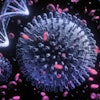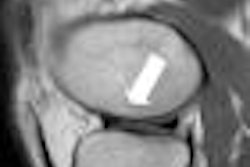Researchers from the Hospital for Special Surgery (HSS) in New York are using MRI and quantitative T2 mapping to examine how a biodegradable scaffold, or plug, can be used to treat patients with damaged knee cartilage.
The study is scheduled for presentation July 9 at the annual meeting of the American Orthopaedic Society for Sports Medicine (AOSSM) in Keystone, CO.
The so-called Trufit plug is designed to have mechanical properties that are similar to adjacent cartilage and bone. The top layer has properties similar to cartilage, whereas the lower layer has properties similar to bone.
Co-author Dr. Asheesh Bedi, a fellow in sports medicine and shoulder surgery at HSS, and colleagues performed analysis of MRI scans of 26 patients in which surgeons had inserted the plug in the knees with donor lesions from osteoarticular transfer system procedures. They followed with imaging studies of MRI and T2 mapping at various intervals for a period of 39 months.
The study found that the plug demonstrated a predictable process of maturation on imaging studies that paralleled the biology of their incorporation. With increasing postoperative duration, the repair tissue demonstrated encouraging properties with T2 values that resembled native articular cartilage, they said.
Quantitative MRI, when combined with morphologic assessment, helped researchers understand the natural history of the repair techniques and define those patients who are most likely to benefit from the surgery.
Related Reading
1T extremity MRI accurately shows knee disorders, June 24, 2009
Extremity 1T MRI equals 1.5T for rheumatoid arthritis, June 8, 2009
MRI with STIR fails to change diagnosis in child abuse cases, May 12, 2009
MRI helps find fractures among elderly female ED patients, April 29, 2009
MRI used to diagnose complex lung infections in children, October 16, 2008
Copyright © 2009 AuntMinnie.com



.fFmgij6Hin.png?auto=compress%2Cformat&fit=crop&h=100&q=70&w=100)




.fFmgij6Hin.png?auto=compress%2Cformat&fit=crop&h=167&q=70&w=250)











